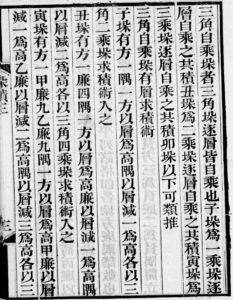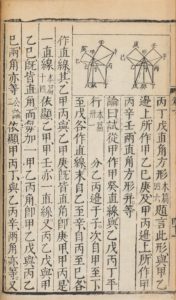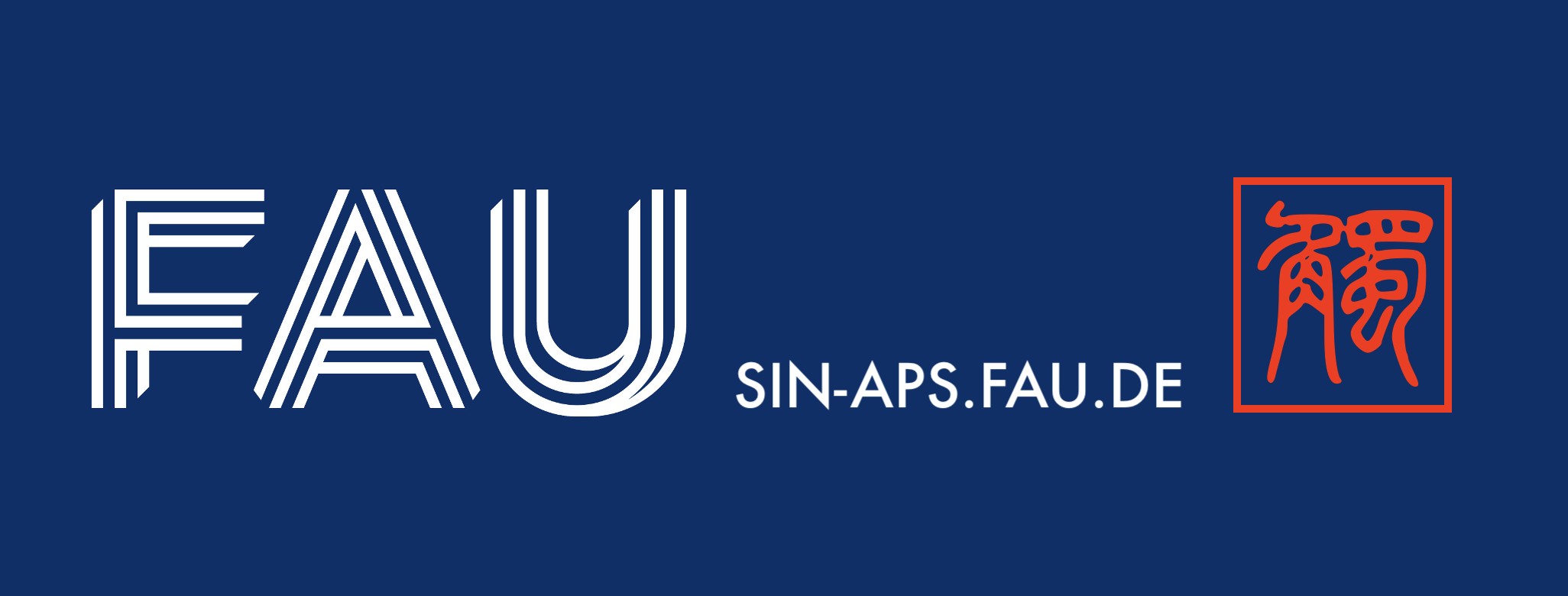The language of algorithmic mathematics
Project Members: Prof. Dr. Andrea Bréard, Diane Donner, Ruqing Fei, Florian Keßler, Valerie Kiel, Tamara Titz
For a German version of the project description, see here.
If one wants to analyze and compare how mathematical rationality was achieved in different knowledge traditions through the computationally prescriptive characteristics of algorithms, it is important to understand the language of algorithmic texts. There is a dire need to make up for a historiographic gap not only for China, but also for the Greek Middle Ages, which were also heavily influenced by algorithms; less so for the Latin Middle Ages, since there was only a little developed geometrical tradition that could have historiographically overshadowed the computational arts. Therefore, in this subproject of sin-aps bearing on numerical-algorithmic rationality, the natural and visual language of Chinese mathematics will be investigated using approaches from the Digital Humanities. One of the basic premises here is that the natural and visual language of algorithmic mathematics is not understood a priori as informal mathematical discourse (IMD). Fundamental to this long-term project on both A) the natural and B) the visual language of algorithmic mathematics is the creation of a multilingual research database for electronic editions of natural language mathematics texts and the publication of annotated translations of key texts of pre-modern Chinese mathematics, in order to enable an interdisciplinary and non-eurocentric dialogue in the history of science in the long run.
As service to the scientific community we contribute in collaboration with Prof. Christian Wittern (Kyoto University) and Prof. Christoph Harbsmeier (University of Oslo) technically and in terms of content to the development of the TLS – Thesaurus Linguae Sericae 漢學文典, adding new features and enriching the online database with punctuated mathematical texts, translations and research notes.

A) Through computational linguistic methods, the formulaic nature of the language of mathematical texts will be measured and verified, and contrasted with the metrics of literary texts. The focus is on the analysis of texts from 1850 onwards, since after the Opium Wars these texts were in tension between Western mathematics characterized by algebraic symbols and the discourse modalities defended by traditionalists in China. Through terminology extraction, stylometric methods and argumentation mining, questions of language change as well as argumentation structures will also be investigated diachronically. This is undertaken in particular in cooperation with Prof. Dr. Stephanie Evert, Chair of Computational Corpus Linguistics, at FAU.
Three PhD Students joined the project: Ruqing Fei, Florian Keßler, and Valerie Kiel. Welcome!

B) In addition to natural language elements, visual elements also play an epistemological role in algorithmic mathematics, both as forms of thought and argumentation; like natural language, they are subject to historical and cultural transformations and transmission processes. Whether and how these diagrams change, subjecting them to a graphic code, for example when copied or translated from one text to another, can only be answered for a large corpus of texts by automatic image analysis. Compared to iconography in art history, mathematical non-iconic diagrams, by their logical and reduced ornamental structures, provide minimal examples for developing computational methods of pattern recognition. In cooperation with the Pattern Recognition Lab of FAU, mathematical diagrams from manuscripts of the Byzantine tradition will first serve as case studies, since a significant corpus of about 500 manuscripts is available here. Methods and questions developed for this purpose can then be applied comparatively to diagrams of Chinese translated printed and manuscript sources and their originals in a second step. To what extent these methods could even replace philological investigations of textual filiation remains open for the time being; however, they should certainly allow to test hypotheses of symmetrization and stylization that, on the basis of a few texts, can only be guessed intuitively.
